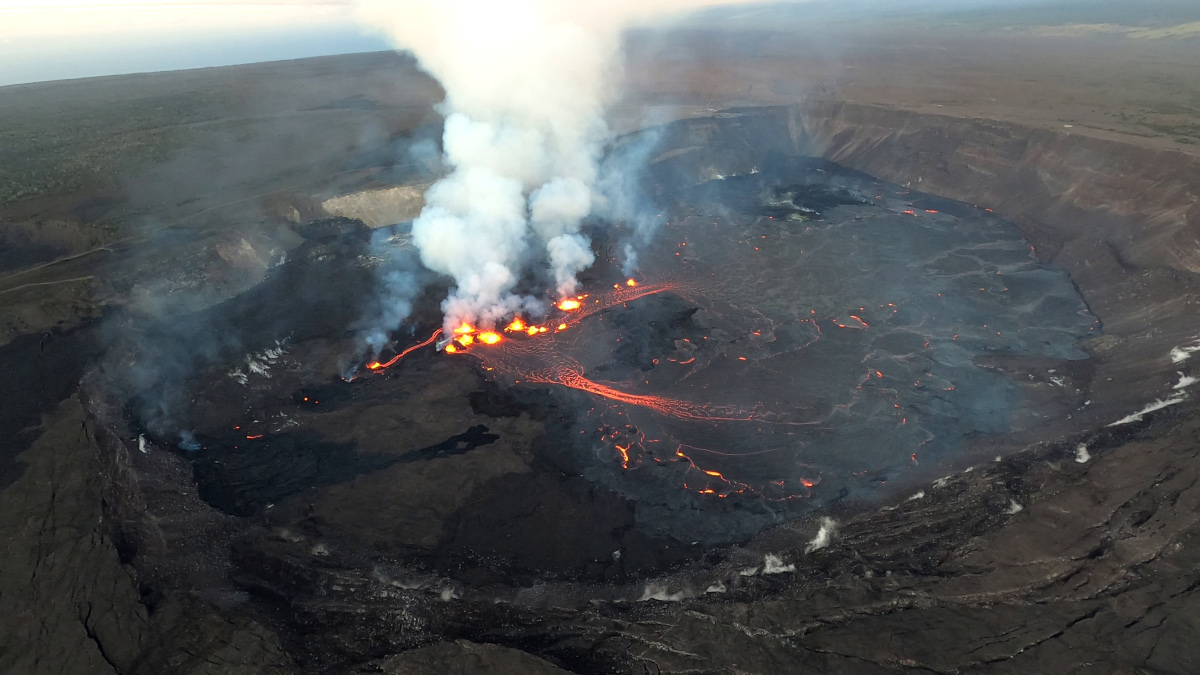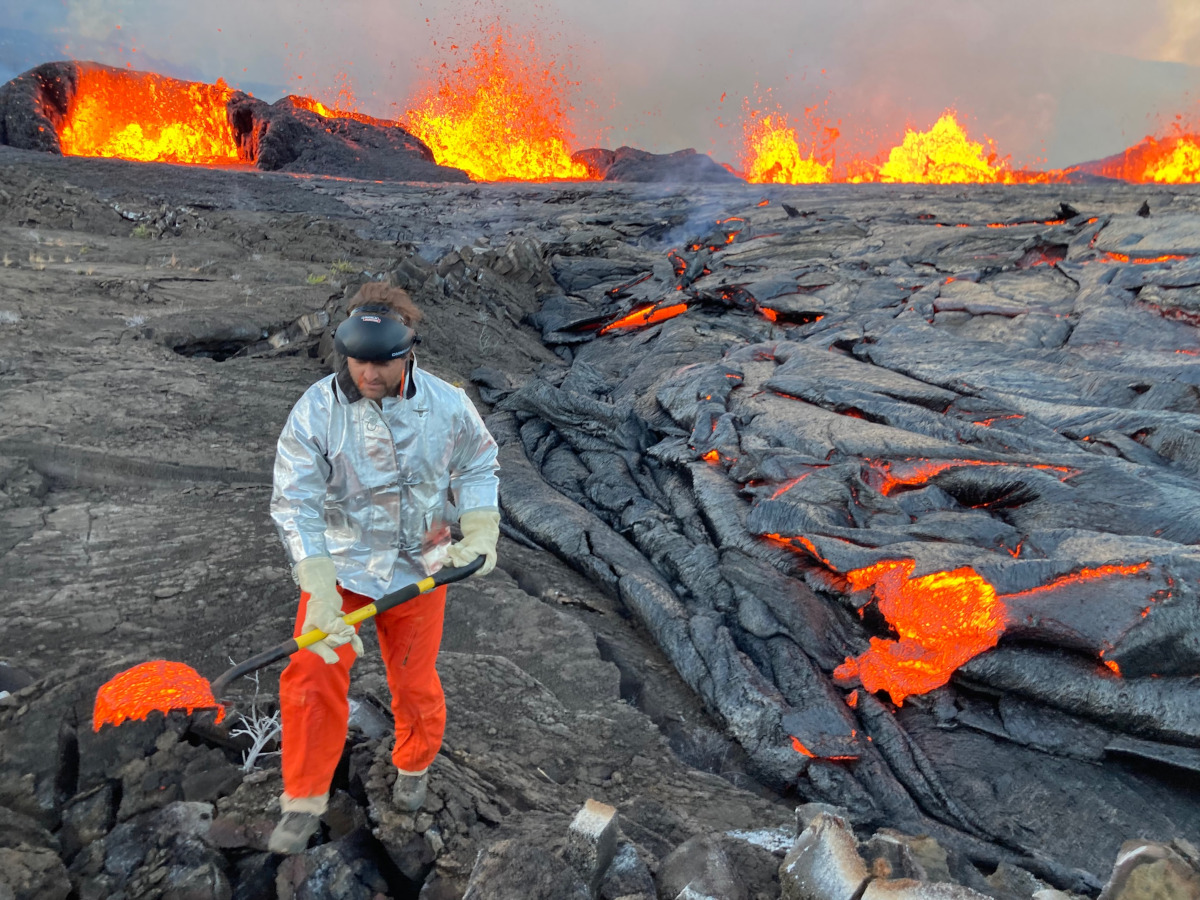(BIVN) – The eruption of Kīlauea that began on Sunday, September 10, continues. All lava is currently confined to the summit caldera, in Halemaʻumaʻu crater and on the downdropped block to the east, within Hawaiʻi Volcanoes National Park.
The U.S. Geological Survey on Monday lowered volcano alert level from WARNING to WATCH, because the style of eruption and fissure locations have stabilized. Also, the extremely high effusion rates that were observed when the eruption started have since declined, and no infrastructure is threatened.
Kilauea’s aviation color code was also lowered from RED to ORANGE because there is currently no threat of significant volcanic ash emission into the atmosphere, outside of the hazardous closed area within Hawaiʻi Volcanoes National Park.
Multiple minor fountains remain active in the eastern portion of the crater floor. The USGS Hawaiian Volcano Observatory says the line of vents stretches just under a mile, or 1.4 kilometers, onto the east wall of the downdropped block.

USGS: “An aerial view of the eruption at the summit of Kīlauea at approximately 6:30 a.m. HST on September 11, 2023. Multiple minor fountains remain active in the eastern portion of Halema‘uma‘u crater floor and on the downdropped block within Kīlauea’s summit caldera.” (USGS photo by M. Patrick.)
The live USGS webcam missed the exact start of the eruption. But on Monday, scientists uploaded two views from other webcams that caught the moment.
At first, the main lava fountain was measured at approximately 50 meters, or 160 feet high. Since then, fountain heights have decreased to about 10-15 meters, or 32-50 feet.
Volcanic gas emissions were also elevated at the start of the eruption, with sulfur dioxide rates of up to 100,000 tonnes per day. Emission rates appear to be lower this morning, but the Hawaiian Volcano Observatory had not confirmed additional measurements as of Monday morning.
During a morning overflight, geologists touched down on a safe location on the downdropped block that was formed during the 2018 summit collapse. From there, the scientists – wearing protective equipment – were able to collect a molten sample of newly erupted material. They say the sample will provide information on magma storage and transport before it was erupted onto the surface as lava.
Access to this hazardous area is by permission from, and in coordination with, the National Park Service. HVO will continue to track the changes in the eruption as it continues, and will provide updates to the public.


by Big Island Video News12:50 pm
on at
STORY SUMMARY
HAWAIʻI VOLCANOES NATIONAL PARK - Geologists were able to collect a molten sample of newly erupted material to better understand the current activity.